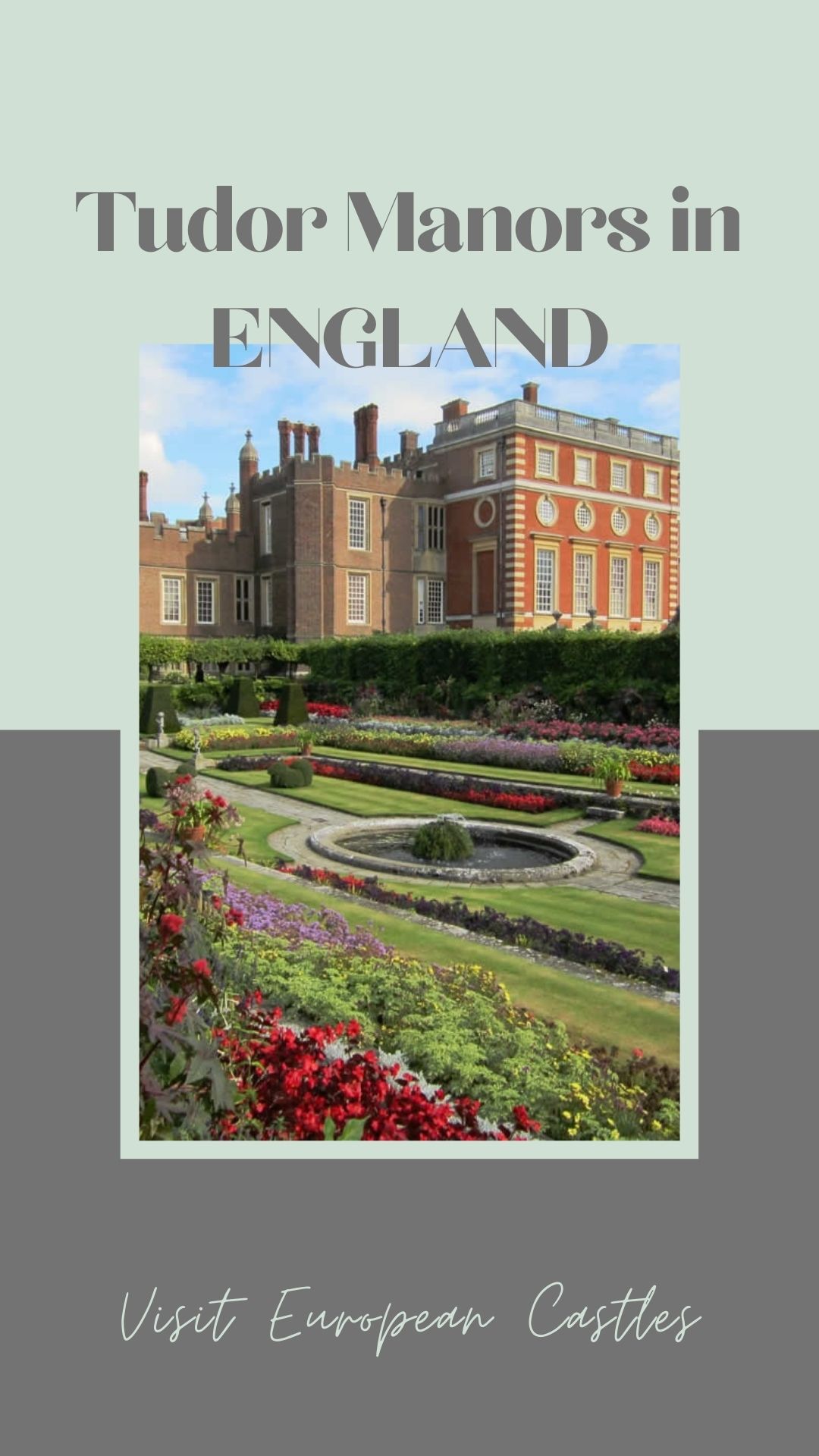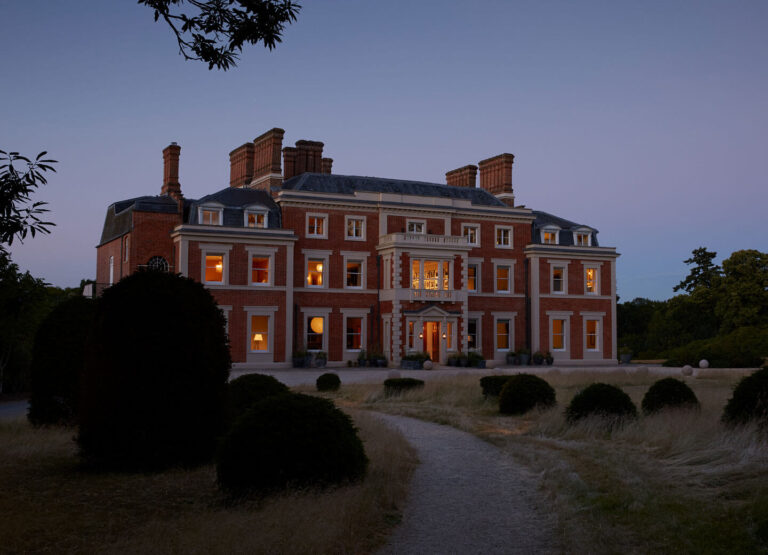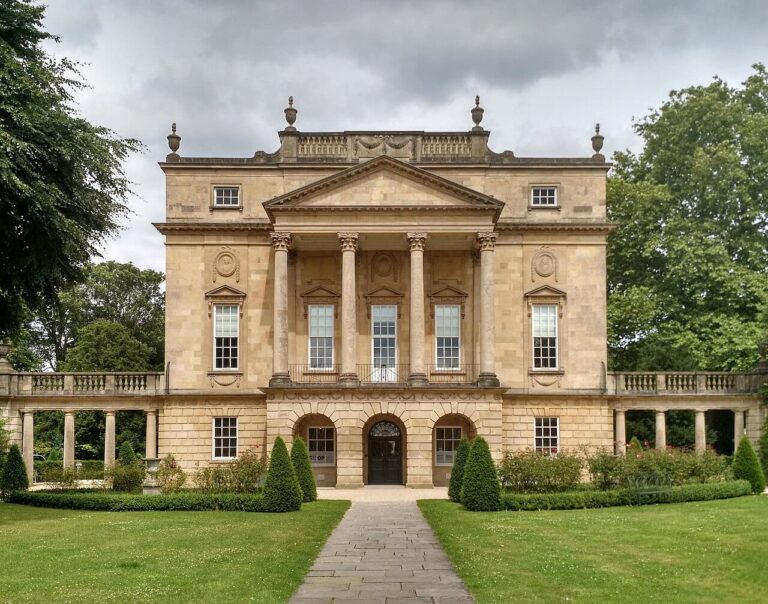27 Tudor Manor Houses in England You Can Visit
England is packed with characteristic Tudor Manor Houses. From Tudor Manor Houses owned or visited by the Tudor Kings and Queens. To Tudor houses owned by the noble families of England.
Many of these Tudor manor houses in England can be visisted. Whether you want to visit a Royal Tudor house, a historic house museum or one of the oldest ancestral homes in England. There’s a wide range of Tudor houses that you and your family can visit.
I have selected the 26 best Tudor Manor Houses in England that you can visit. From Cornwall to Manchester. Wherever you live in England, a historic Tudor house is nearby.
Hampton Court Palace
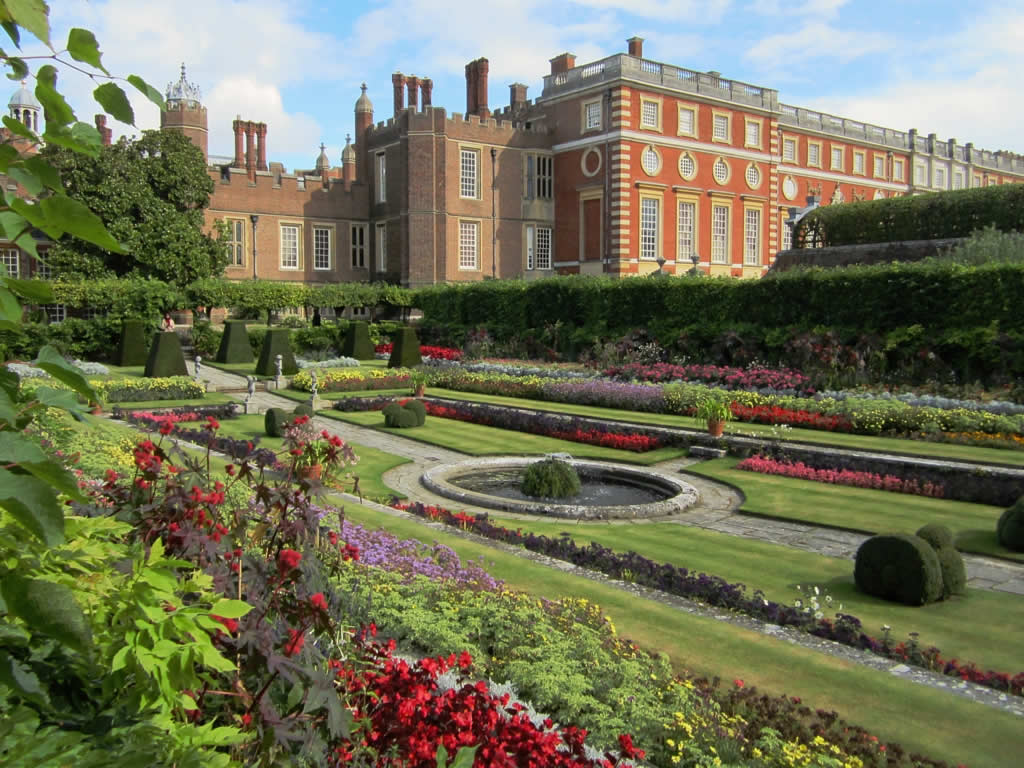
This Royal palace was built in the 16th century for Cardinal Wolsey. It was later given to Henry VIII and it became one of his favourite palaces. Hampton Court Palace together with St. James’ Palace are the only surviving palaces owned by Henry VIII.
King William III rebuilt the palace so now the castle is in Tudor and Baroque style. The palace and grounds are open to visitors.
Athelhampton

One of the finest examples of a Tudor Manor House in England. The Tudor house has Elizabethan gardens and a kitchen garden. The restaurant offers dishes with products from the kitchen garden. Thomas Hardy frequently visited the house and even wrote a poem about it.
The house and gardens are open to visitors Sunday-Friday.
Did you know you can also visit Thomas Hardy’s homes? You can read all about it in the Writers’ Houses in England post.
Newark Park

The Tudor country house in Gloucestershire was originally built as a hunting lodge between 1544-1556. In the 20th century the house fell into disrepair but American architect Bob Parsons renovated the house to its former glory.
Newark Park is now owned by the National Turst an open to the public on a daily basis.
Eltham Palace
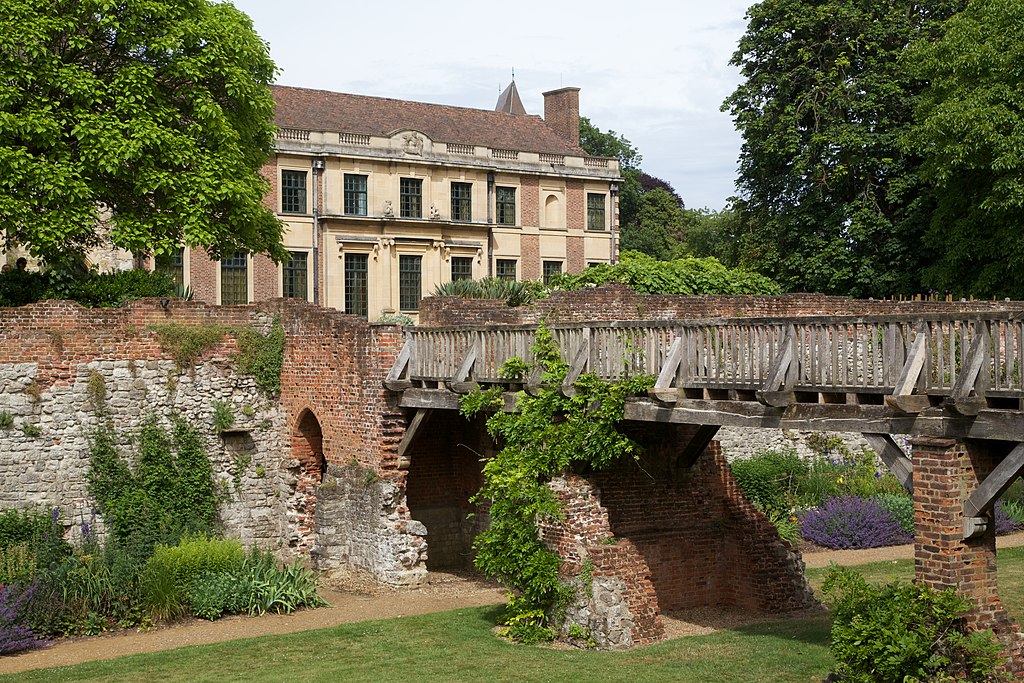
A unique manor house where Medieval, Tudor and Art-Deco blends together. It was a Royal residence during the Tudor period and future King Henry VIII grew up at Eltham Palace. In the 1930s millionaires Stephen and Virginia Courtauld transformed to house. Therfor you can now see a unique blend of historic architecture with 1930s design.
The house and gardens are open for vistors. For actual opening times visit the English Heritage website
Cotehele

Cotehele is a meideval country house with Tudor additions in the parish of Calstock. The manor house was built by the Edgecumbe family in 1458. Sir Richard Edgecumbe was gifted the property after fighting for Henry Tudor in the Battle of Bosworth.
Cotehele is one of the least altered Tudor houses in England. The house also contains many textiles and furniture from Mount Edgecumbe House. The expansive estate also includes a working mill on an historic quay and a beautiful garden with valley views.
Cotehele visitor information: The garden is open daily. The house is open March-October.
Address: St Dominick, near Saltash, Cornwall, PL12 6TA
Gawsworth Old Hall

This Tudor manor house in England was built in the 15th and 16th-century. Mary Fitton, the “Dark Lady” of Shakespeare’s sonnets and maid of honour to Queen Elizabeth I lived at the house. The house and garden can be visited.
Helmingham Hall

A moated Tudor manor house. The house was built in 1480 by John Tollemache and the family still ownes the house. Only the gardens are open for visitors. Here you can clearly see the influence of garden designer Xa Tollemache.
The house was a filming location for “The Golden Bowl”.
Blakesley Hall

A timber-framed Tudor farmhouse in Birmingham with beautiful gardens. By visiting Blakesley Hall you can discover what life was like for a wealthy family during the Tudor time.
Kentwell Hall

Kentwell Halll is one of the finest moated Tudor Manor Houses in England. The house is a combination of Tudor and classical elements with Tudor portraits and historic tapestries. Extensive lawns, walled gardens, massive clipped yews, espaliered fruit trees and giant cedars surround the House.
The gardens are open March-September and the house is open May-September.
Godolphin Estate

The Tudor & Stuart mansion with formal gardens dates back to the 15th-century and also has Elizabethan stables. It was the former seat of the Dukes of Leeds (who only visited the house twice) and the Earls of Godolphin.
The house and garden is open for visitors and the house can be rented as a holiday let.
Barrington Court

The house was built in 1552 by William Clifton. And the court house is one of the earliest examples of a classic E-shaped Elizabethan manor house. In the 18th century the manor house became a tenant farm and a fire in the 19th century destroyed much of the interiors. Barrington Court was acquired by the National Trust in 1907. And in the 1920s they leased the manor house to Col. Abram Arthur Lyle. He and his wife restored the manor house and a new garden was dsigned by Gertrude Jekyll.
Barrington Court was used as a filming location for Wolf Hall.
The gardens, parkland and book barn are open for visitors. The house is currently closed.
Christchurch Mansion

This Tudor brick mansion house in Suffolk was built between 1548-1550. Several noble families resided in the house. But it is currently owned by the Colchester + Ipswich Museums. The historic house museum shows the shouse through the centuries. From the Tudor kitchen to the Georgian saloon and the detailed Victorian wing.
The museum also houses a collection of art by Suffolk artists. This includes the biggest collection of Thomas Gainsborough and John Constable paintings outside of London.
Owlpen Manor

Owlpen is one of the most romantic Tudor houses in Southern England. Located right under the Cotswold hills, it is the family home of the Mander family.
The Tudor manor house was built between 1450 and 1616. In the 1920s the house was saved from ruin with Arts and Crafts repairs.
The “Old-English” style garden is much loved by garden enthousiasts. The hillside garden is set on seven hanging terraces of the 16th/17th centuries, with yew topiary, old roses and box parterres.
Owlpen Manor was used as a filming location for Tess of the D’Urbervilles, Becoming Jane and Pantom Thread.
Thornbury Castle
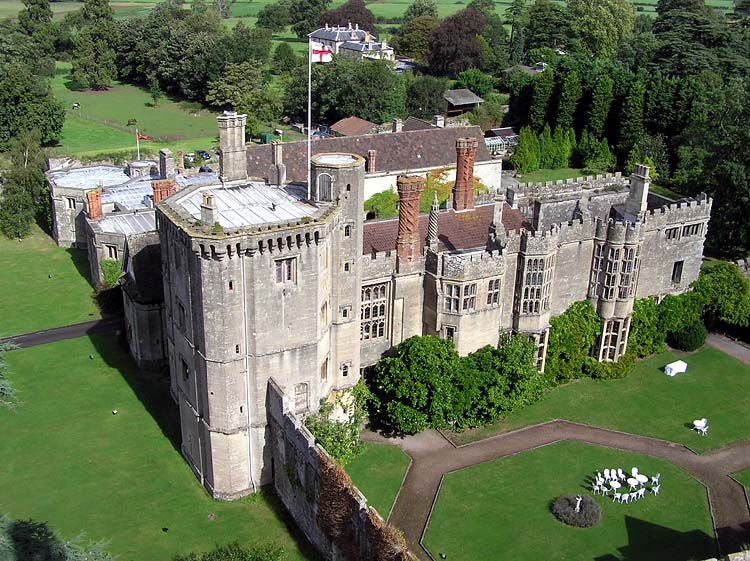
The Tudor castle in Gloucestershire was built in 1511 for Edward Stafford, 3rd Duke of Buckingham. Even though it holds the title castle it is not in fact a military fortress. But instead it’s a Tudor country home.
King Henry VIII confiscated the castle after the Duke’s death. He stayed at the castle in August 1535 with Queen Anne Boleyn. 9 years later Queen Mary giften the castle to Henry Stafford, 1st Baron Stafford.
The castle fell into disrepair but it was saved and renovated by the Howard family in 1824.
Today Thornbury is a luxury castle hotel and wedding venue.
Bramall Hall
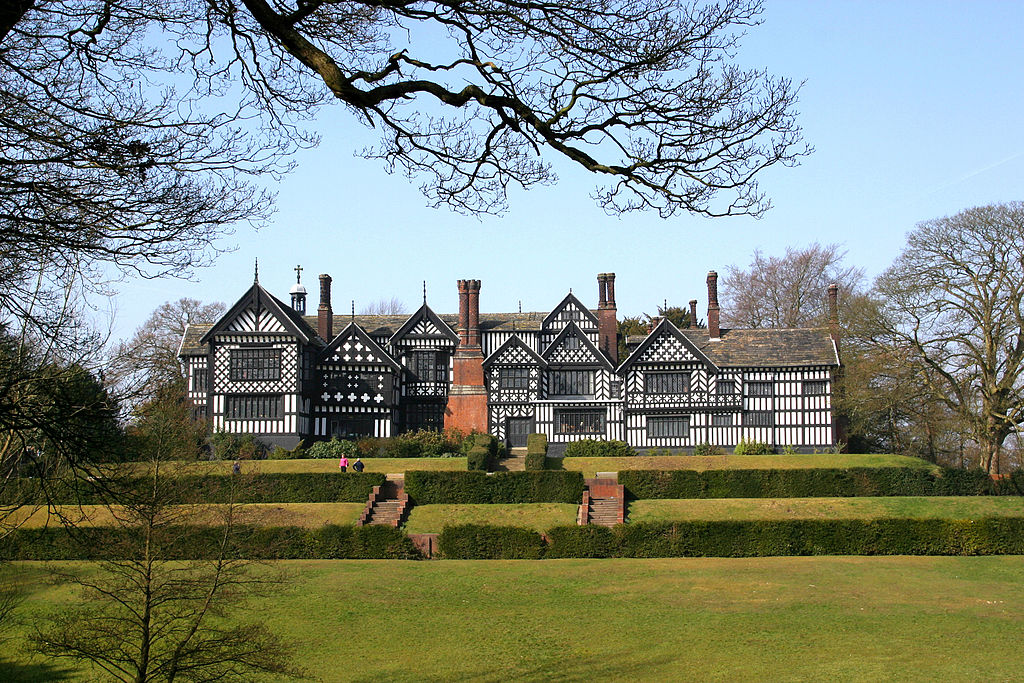
The timber framed Tudor manor house is located in the Greater Manchester area. The oldest part of the manor house date back to the 14th century. In the 16th and 19th century new additions were added to the Tudor house. Bramall Hall has 16th century wall paintings, Elizabethan plaster ceiling, Victorian kitchens and Servants’ Quarters.
The hall is now a historic house museum showing more of the families and servants who lived and worked here. The surrounding parkland is designed in romantic Victorian style.
Shibden Hall

The Tudor Hall in West Yorkshire was the family home of English diarist Anne Lister who was called “the first modern lesbian”. Anne Shibden became the owner of the Hall after her aunt died. She asked York architect John Harper and landscape gardener Samuel Gray to impprove the Hall. This included the addition of a Gothic tower, whcih she used as a library. After Anne’s dead the Hall passed to her partner Ann Walker.
The Hall is used in the BBC television series Gentleman Jack, which is about its most famous owner Anne Lister
Visit the Shibden Hall website →
Coughton Court

The Tudor country house is located in Warwickshire. The oldest part of the manor house is the Tudor gatehouse which sits at the center. This gatehouse was built in 1536 with hexagonal turrets and oriel windows in English Renaissance style.
The wings of the manor house are later additions in Strawberry Hill Gothic style made famous by Horace Wallpole. (read more about Strawberry Hill in this post)
Coughton Court is now owned by the National Trust and offers a collection of Catholic treasures.
Packwood House

The timber framed Tudour manor house was built in the 16th century. The house has an expansive collection of fine tapestreis and 16th and 17th century furniture.
Packwood has a beautiful garden mainly known for its yew garden. The house is now owned by the National Trust.
Layer Marney Tower

A Tudor Palace located in Essex, built in 1520. It is a perfet example of a Tudor gatehouse and it’s the tallest Tudor gatehouse in England.
The Gatehouse, Church & Garden can be visited April-September. And it is also used as a wedding venue.
Smithills Hall

One of the oldest manor houses in North West England. Smithills’ origins date back to Medieval times but it has Tudor and Victorian wings. The estate also houses a Chapel built in 1520.
American author Nathanial Hawthorne also visited the Hall.
The house is open for visitors Wednesday-Friday.
Browsholme Hall

Located in the Forest of Bowland, Browsholme Hall is the oldest surviving family home in Lancashire. The 500-year-old- Tudor manor house is owned by the Parker family.
The house and gardens are open for visitors. The estate also offers holiday accomondation. And it can be booked as a wedding venue.
Croxteth Hall

Built in 1575 with extensions in Tudor, Georgian and Queen Anne style. It was the ancestral home of the Molyneux family, the Earls of Sefton until the last Earl died in 1972.
Inside the home is Edwardian in style.
The facade is from 1702. The hall is currently closed for restorations (which will finish in Autumn 2022) but the Park is open for visitors.
Speke Hall
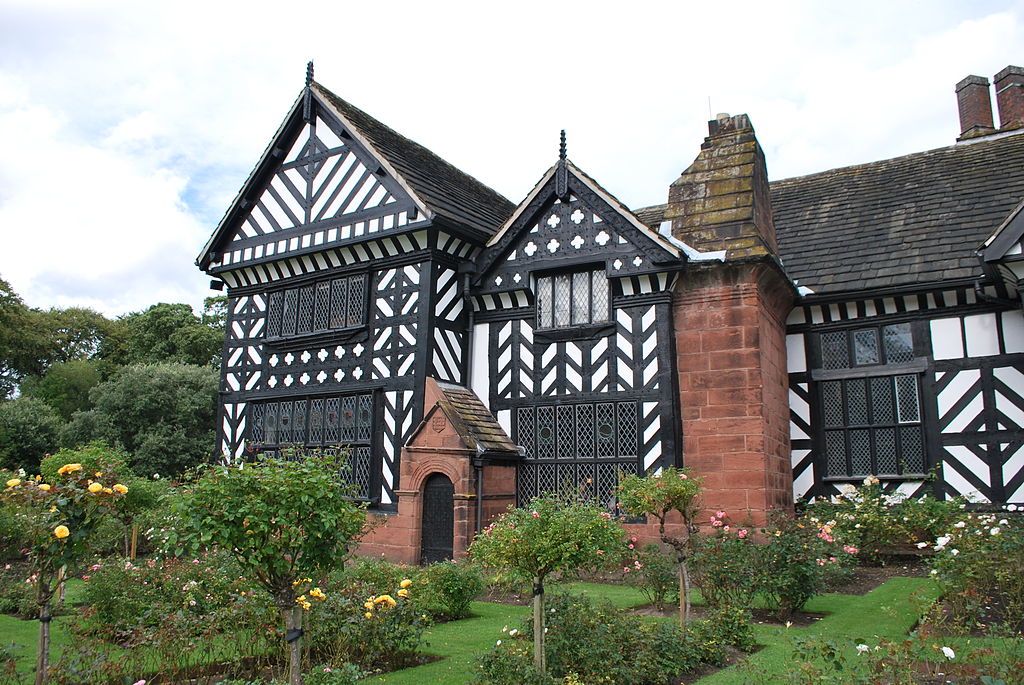
A wattle-and-daub Tudor manor house built by Sir William Norris in 1530. The house has a priest hole because the Norris family were Catholic. Visiting the house you will find 500 years of history and see how its past residents lived.
The Hall is open Wednesday-Sunday but the gardens are open daily.
Hall Place

The Tudor mansion in South East London was built in 1537 for Sir John Champneys. The stately home became the property of the Dashwood family in the 1700s. During WWII it was an intercept station for the US Army. Now the Tudor mansion restored to its Tudor & 17th century design. The gardens include a Butterfly House and Plant Centre.
Greys Court

In 1485 the estate was granted to Sir Francis Knollys who built the main part of the current building. He incorporated parts of the 1450s house that already stood on the estate. The Stapleton famiy first converted the house into a Georgian home with Medieval ruins. And later into a Victorian country house. On the estate you will see remains of the former houses dating back to the 11th century.
The house is used as a filming location for Downton Abbey (it features as Ryholme, a hunting lodge that the Earl of Grantham considered buying).
Berry Pomeroy Castle

A Tudor mansion built in the 15th-century within the walls of an older castle. In 1547 the castle was sold to Edward Symour (brother of Jane Seymour, one of the wives of Henry VIII) and it has stayed in the Seymour family ever since.
The castle is open to visitors daily.
Sutton House

The Tudor house is the oldest residential building in the London borough Hackney. The Tudor manor house was built in 1535 by Sir Ralph Sadler, Principal Secretary of State to Henry VIII.
The rich history of the house can now be visited.
Tudor Manors in England on a map
Pin Tudor Manor Houses in England for later
